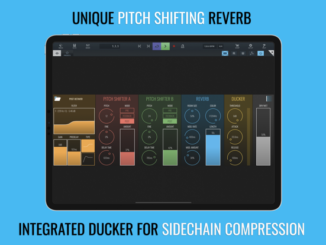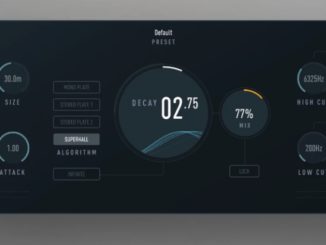It’s time to check out the three available modulators which differentiate quite a lot in the characteristics. First to mention, each modulator can work as classic envelope generator or as LFO. So you can use Modulator 1 as EG and Modulator 2 as LFO or both as LFO. The main difference between the three modulators is the range of the speed. The slowest is the mod 3 (VCA), mod 1 is the mid range and mod 2 is the fastest one.
These switches gives the user the freedom to decide how the modulator behaves. If HOLD is OFF and LFO is OFF, the modulator operates as envelope generator with an Attack and Decay characteristic. Rise is here the Attack and Fall the Decay. With the level, you change the intensity of this envelope. If HOLD is ON and LFO is OFF, an envelope with Attack and Release is activated. The HOLD function means here the Release of the envelope.
If HOLD is OFF or ON and LFO is ON, the modulator operates as LFO. To change the speed of it, you can use the Fall slider and the waveshape of the LFO can be changed with the Rise slider. By default the modulators are routed to the filter but you can route also other parameters like the pulse width via the patchbay. In summary, this entire modulation area offers so much sound design and sonic possibilities. It’s not easy to understand everything from the first minute but if you understand it after some days, it’s a modulation beast in a little box.
Check out here my patch where I created a duel of the modulator sound with the Dreadbox NYX
Than we have a VCA with a big knob for the volume of the amplitude of the synth. Also here as mention already, the modulator is in this section the slowest one. In the patchbay, you can also have also full access to the input of the VCA.
Last but not least we have the reverb section on top middle that includes three different parameters. Time controls the pre-delay and brightness of the reverb. In simple words: it’s the time that passes until the first reflection reaches the ear. Than you have a the reverb decay time and the mix that works as dry and wet knob. An additional control for the reverb, you can find on the right side in the patchbay. With the REV input, you can control the pre-delay and tone of the reverb with a modular par example.
During my test time, I felt completely in love with these reverb because it produce such a great sound that especially works great on ambient and drone stuff. With the ability to use the reverb not only in this synth but also on external gear via the audio in, the NYX can work easily as external reverb unit. Just connect your device to the audio in and raise the level of the VCA. Although it is mono, the built-in reverb by Crazy tube circuits sounds amazing and fit perfectly in this device.
On the backside, you find the input for the included power supply, than your personal serial number, than a mono audio output and audio input (reverb input). Interesting to mention also is that you can use the input in two directions. First, you can route any audio source directly to the reverb and use the NYX as reverb unit or you can use the input as output. The second output is less noisier than the main output. For the connectivity with external controllers, the NYX features MIDI through and MIDI in. It’s a bit more complicated if you want to change the MIDI Channel. To do this, you must open the device and change the position of the DIP switch. Another excellent feature of this new Dreadbox Synthesizer is that you can use the MIDI interface also also as MIDI to CV interface, which you can use to transform easily the midi data in analog CV Gates.
For owners of an Dreadbox Erebus Synthesizer, there is also another feature especially for you. You can polychain the NYX with a second NYX Synthesizer or you can pair it also with an Erebus. I can imagine that the results are quite interesting to see a polychain NYX with an Erebus because both have an excellent sound quality and the combination of a Delay and Reverb, this could produce very interesting sounds.







Be the first to comment